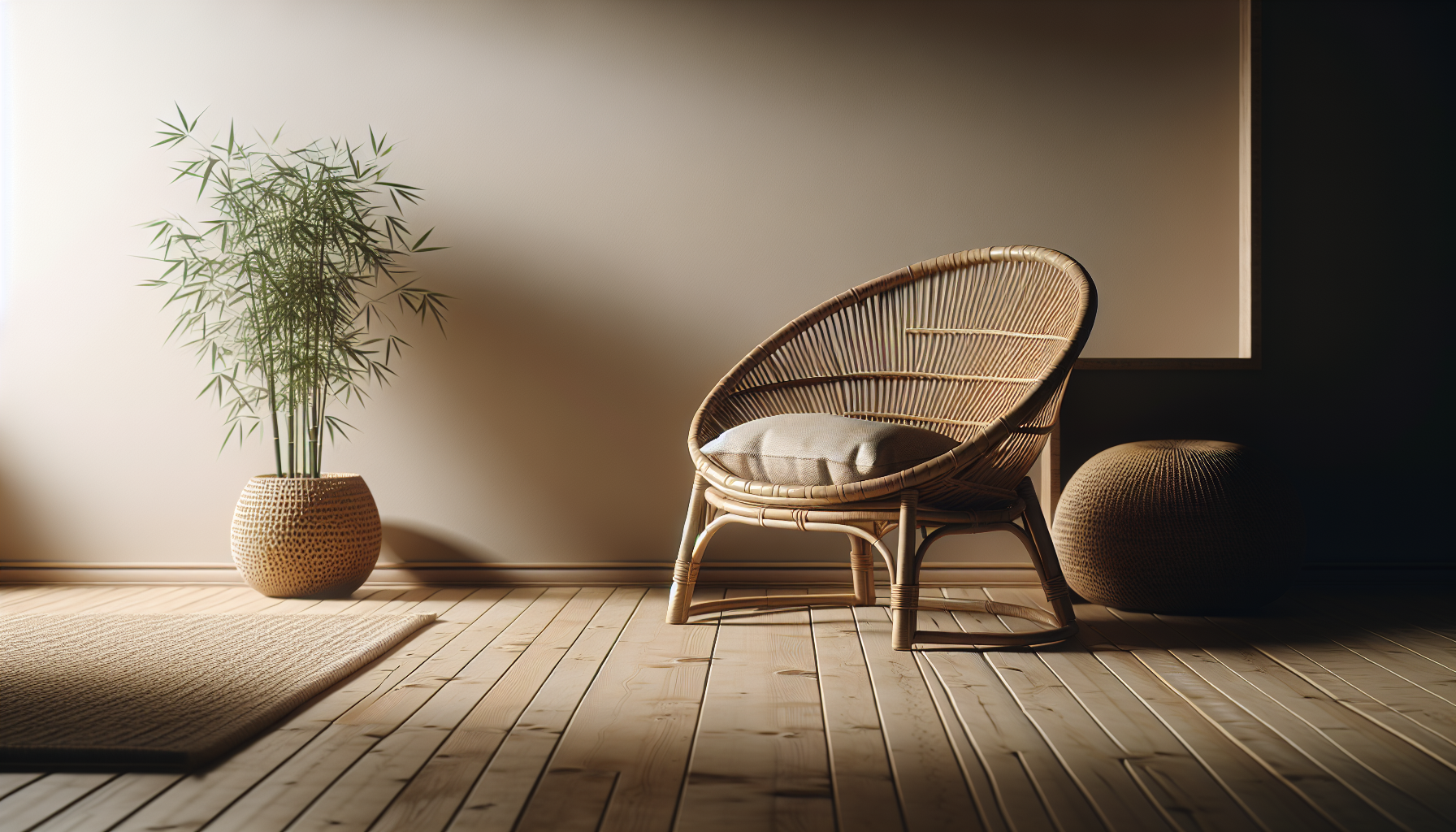Have you ever considered how the materials you choose in your home can affect its overall vibe? When diving into the world of interior design, the choice of furniture is paramount, especially when thinking about styles like Japandi, which harmoniously blends Japanese and Scandinavian aesthetics.
Understanding Japandi Design
Japandi design is more than just a trend; it’s a lifestyle rooted in minimalism and functionality. By incorporating simplicity along with natural elements, this style creates serene and warm spaces.
Characteristics of Japandi Style
Japandi is characterized by clean lines, neutral colors, and a mix of traditional Japanese elegance with the cozy charm of Scandinavian decor. Furniture pieces often appear simple but come with a deep respect for craftsmanship.
- Clean Lines: Every piece of furniture has a purpose, eliminating unnecessary embellishments.
- Neutral Palette: Soft, earthy tones dominate, making spaces feel calm and inviting.
- Natural Materials: Wood, textiles, and stone are common materials that bring nature indoors.
Creating a Japandi space isn’t just about aesthetics; it’s about fostering a sense of peace and comfort in your home.
The Appeal of Rattan and Bamboo
Now, let’s talk about rattan and bamboo. Have you noticed how these materials seem to breathe life into spaces? Both rattan and bamboo have gained popularity for their versatility and eco-friendliness, making them excellent choices for a Japandi home.
Rattan: A Natural Wonder
Rattan is a climbing palm that grows in tropical regions. It’s known for its flexibility and durability, making it a preferred material for creating furniture.
Benefits of Rattan
- Sustainability: Rattan is a renewable resource, making it an environmentally friendly choice.
- Aesthetic Versatility: Its natural finish can blend seamlessly in both modern and traditional settings.
- Lightweight yet Robust: Rattan furniture is easy to move yet incredibly sturdy, perfect for creating a versatile living space.
Bamboo: The Eco-Friendly Option
Bamboo, a grass rather than a tree, is another sustainable superstar. It’s fast-growing and can be harvested without killing the plant, offering a renewability that few materials can match.
Benefits of Bamboo
- Strength and Durability: Bamboo furniture is known for its strength, often outperforming traditional wood.
- Water-Resistant: It has natural water-resistant properties, making it suitable for various climates.
- Lightweight: Like rattan, bamboo is easy to maneuver and rearrange.
Both materials embody a connection to nature, a core aspect of the Japandi philosophy.
Integrating Rattan and Bamboo into Japandi Spaces
Wondering how to mix rattan and bamboo into your Japandi design? It’s simpler than you think! Here are some ideas to seamlessly blend these materials into your interior style.
Furniture Pieces
When selecting furniture, look for key pieces that embody the essence of both rattan and bamboo.
Rattan Chairs
Rattan chairs with simple, minimalist designs can become a striking focal point in your living room. Opt for muted colors or natural finishes that tie into your overall color palette.
Bamboo Tables
Consider bamboo dining or coffee tables. Their clean lines and natural grain can pair beautifully with other wooden elements in your space.
Decorative Accents
Beyond furniture, take advantage of rattan and bamboo in your decor.
Rattan Baskets
Rattan baskets serve as both storage solutions and accent pieces. Use them to organize magazines or as planters for indoor plants, adding a touch of greenery.
Bamboo Art
Incorporate bamboo wall art or sculptures that echo the linear forms found in Japanese design. These pieces can enhance the minimalist aesthetic while staying true to nature.
Lighting Options
Lighting plays a huge role in setting the mood. Rattan lampshades can create soft, diffused light, establishing a warm and inviting atmosphere.
Color Schemes and Textures
Combining natural materials with harmonious colors is essential in Japandi style.
Neutral Palette
When working with rattan and bamboo, stick to a neutral color scheme of beiges, creams, and soft grays. These tones reflect light and promote tranquility.
Example Colors:
| Color Name | Description |
|---|---|
| Warm Beige | A soft, inviting shade that pairs well with wood. |
| Light Gray | A cool tone that can offset warmer wood hues. |
| Ivory | A classic color that feels fresh and airy. |
Textural Balance
Textural elements are also key in Japandi. Combine the smoothness of bamboo with the textured weave of rattan to create visual interest.
Enhancing the Space with Plants
Plants play a crucial role in Japandi design, further connecting your space to nature.
Choosing the Right Plants
- Bamboo Palm: Tall and elegant, it brings a tropical feel and purifies the air.
- Snake Plant: This resilient plant fits perfectly in minimalist decor and is low maintenance.
- Pothos: Add some greenery and texture to your shelves with trailing leaves.
Incorporating Plants
Use rattan-covered pots or bamboo plant stands for a cohesive look. Make sure to place plants in well-lit areas to enhance both their growth and your home’s aesthetics.
Accessorizing with Purpose
In Japandi design, every accessory should have a purpose. This doesn’t mean you need to eliminate decoration entirely; instead, focus on pieces that contribute to your home’s calmness and functionality.
Selecting Quality Accessories
Choose quality over quantity. A few well-placed, meaningful accessories can often create more impact than a cluttered display.
Recommended Accessories:
| Accessory Type | Purpose |
|---|---|
| Minimalist Vases | For displaying blooms without detracting from simplicity. |
| Handcrafted Art | Showcase craftsmanship and individuality. |
| Natural Textiles | Use cotton or linen throws to add warmth and comfort. |
Conclusion: Embracing Nature in Your Home
As you think about enhancing your living space, consider how incorporating rattan and bamboo can align with the principles of Japandi design. By choosing these materials, you’re not only making a style statement but also fostering a sense of harmony in your home.
By keeping an eye out for purposeful, natural elements and aiming for a balanced color palette and textures, you can create a serene environment that resonates with peace and practicality.
Incorporating rattan and bamboo into your home design isn’t just stylish—it’s a step towards a more sustainable lifestyle, emphasizing the beauty and significance of nature within your living space. By thoughtfully curating your environment, you’re inviting tranquility and warmth into your daily life.

